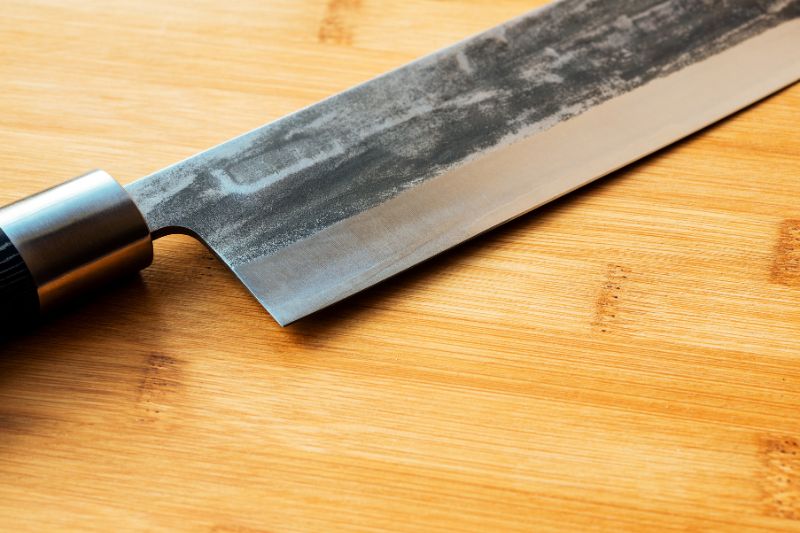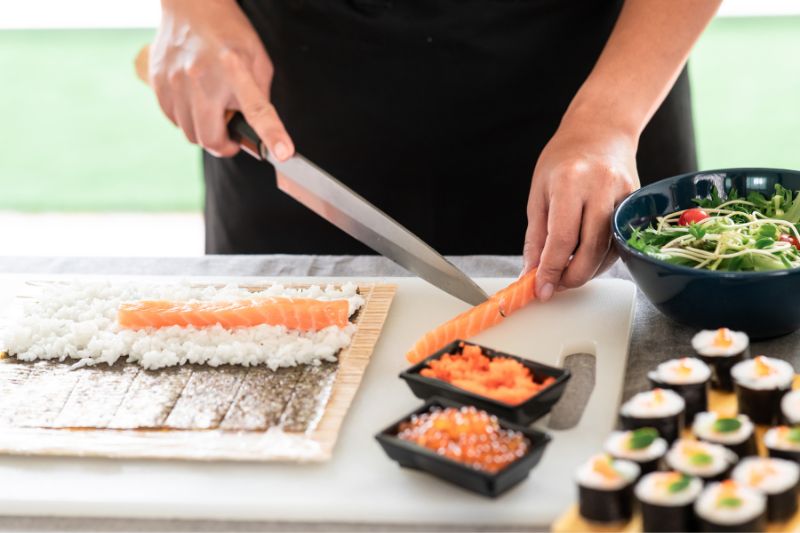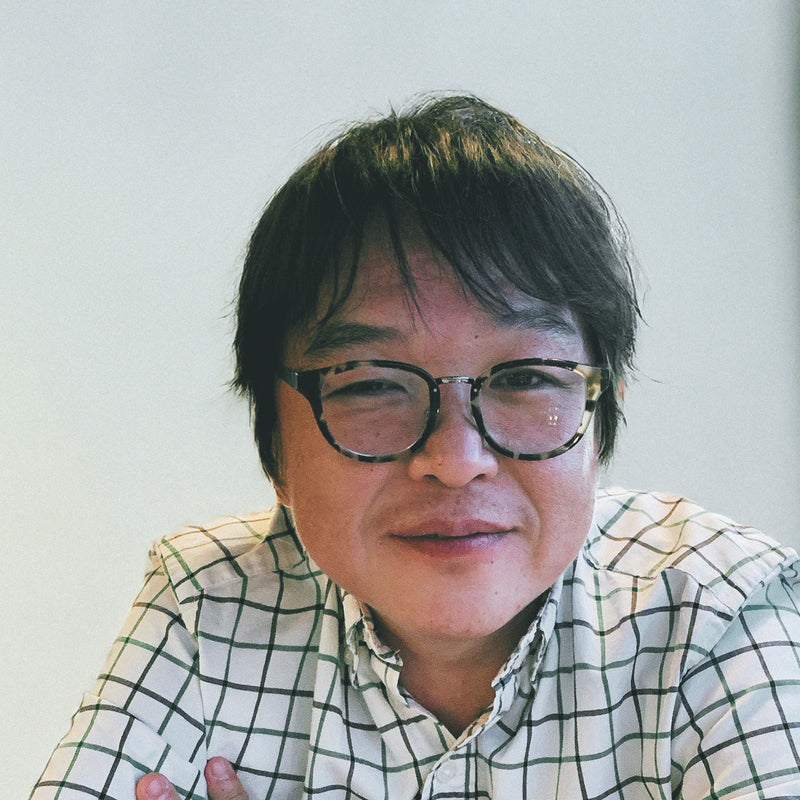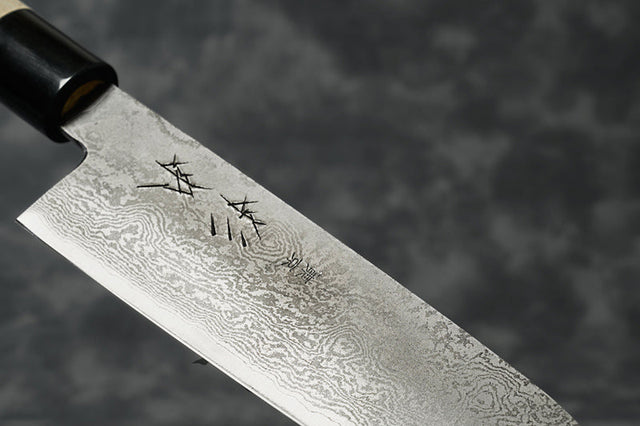Many Japanese knives are available at a range of price points, but even the lower-priced knives often offer superior quality and craftsmanship compared to knives from other countries.
Many Japanese knives are available at a range of price points, from relatively inexpensive to very expensive. The price of a Japanese knife depends on various factors, including the materials used, the craftsmanship involved, and the level of detail in the design.
It's worth noting that even lower-priced Japanese knives are often made with high-quality materials and superior craftsmanship compared to knives from other countries. In addition, Japanese knife makers take pride in their work and are often willing to spend extra time and effort to create a functional and aesthetically pleasing knife.
That being said, it's also worth noting that some of the most expensive Japanese knives are true works of art, with intricate designs and exceptional attention to detail. These knives are often purchased by collectors or professional chefs willing to pay a premium for the best.
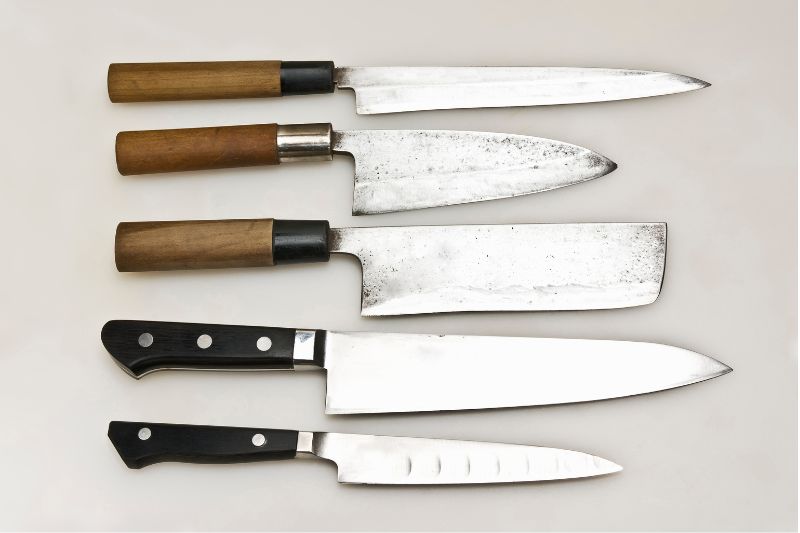
Japanese knives are often more expensive than other types because they are typically made with high-quality materials and superior craftsmanship. Here are a few reasons why:
1. High-quality steel:
Japanese knives are typically made with high-quality steel, which is harder and more durable than the steel used in many other knives. This means that the knives can be sharpened to a finer edge, which makes them more effective for precision cutting tasks.
2. Traditional craftsmanship:
Japanese knives are often made by skilled craftsmen trained in traditional techniques passed down for generations. This level of skill and expertise is reflected in the price of the knives.
3. Attention to detail:
Japanese knives are known for their attention to detail, from how the blade is sharpened to how the handle is crafted. This level of precision requires a lot of time and effort, which is reflected in the price of the knives.
4. Design:
Japanese knives often have unique, elegant, functional, and aesthetically pleasing designs. These designs are often the result of years of refinement and experimentation, which adds to the value of the knives.
Here are the most common types of Japanese knives that are known for their high price:
1. Honyaki:
These knives are made from a single piece of high-carbon steel and are forged using traditional techniques. They are known for their exceptional sharpness and durability and can cost thousands of dollars.
2. Yanagiba:
This long, thin knife is used for slicing raw fish for sushi and sashimi. Yanagiba knives made by master artisans can cost upwards of $1,000.
3. Kiritsuke:
This knife is a hybrid between a Yanagiba and an Usuba, with a long, thin blade that can be used for both slicing and chopping. Kiritsuke knives made by skilled craftsmen can cost several hundred dollars.
4. Deba:
This heavy, sturdy knife is used for filleting fish and butchering meat. Deba knives made by master artisans can cost several hundred dollars.
5. Sujihiki:
This knife is used for slicing raw or cooked meat and has a long, thin blade that allows for precise cuts. High-quality Sujihiki knives can cost several hundred dollars.
Other Japanese knives, such as Gyuto, Santoku, and Usuba, can also be expensive, depending on their quality and craftsmanship. Ultimately, the cost of a Japanese knife is determined by the materials used, the craftsmanship and skill involved in making the knife, and the rarity and uniqueness of the design.
While Japanese knives may be more expensive than other types, their exceptional sharpness, quality, unique designs, cultural significance, and investment value make them a popular choice for many people. They are often considered a worthwhile investment for serious cooks and chefs.
Get Free Bonus Books
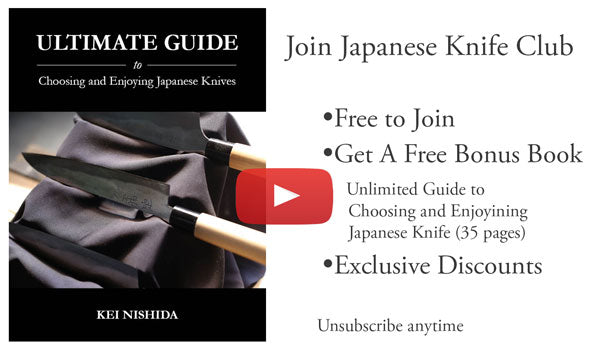
Sign up for free to the Japanese Knife Club to get advice and exclusive articles about how to choose Japanese Knives, and tips and tricks for using Japanese knives.
About the author
Kei Nishida
Author, CEO Dream of Japan
Certification: PMP, BS in Computer Science
Education: Western Washington University
Kei Nishida is a passionate advocate of Japanese craftsmanship, a writer, and the founder and CEO of Japanese Knife Co., Japanese Green Tea Co., and Japanese Coffee Co., all part of Dream of Japan.
His journey began with a mission to introduce the world to the exquisite flavors of Japanese green tea. Through Japanese Green Tea Co., he pioneered the import of premium tea grown in nutrient-rich sugarcane soil, earning multiple Global Tea Champion awards. He then expanded into the world of coffee, launching Japanese Coffee Co., the first company to bring Sumiyaki charcoal-roasted coffee to a global audience.
With a deep appreciation for Japanese artistry and tradition, Kei turned his attention to one of Japan’s most revered crafts: bladesmithing. Through Japanese Knife Co., he made handcrafted katana-style knives, created by a renowned katana maker, available outside Japan for the first time. These exceptional knives embody centuries of samurai sword-making expertise, blending tradition with modern functionality for chefs and collectors alike.
Kei’s journey continues as he uncovers and shares Japan’s hidden treasures—one sip, one blade, and one legacy at a time.

